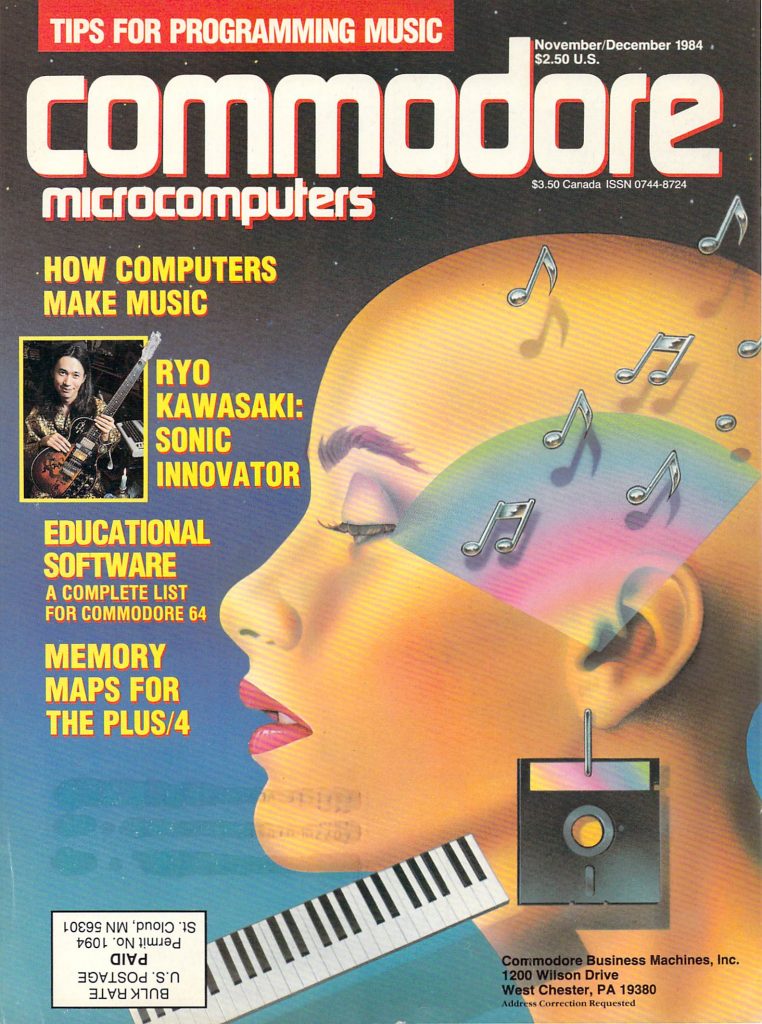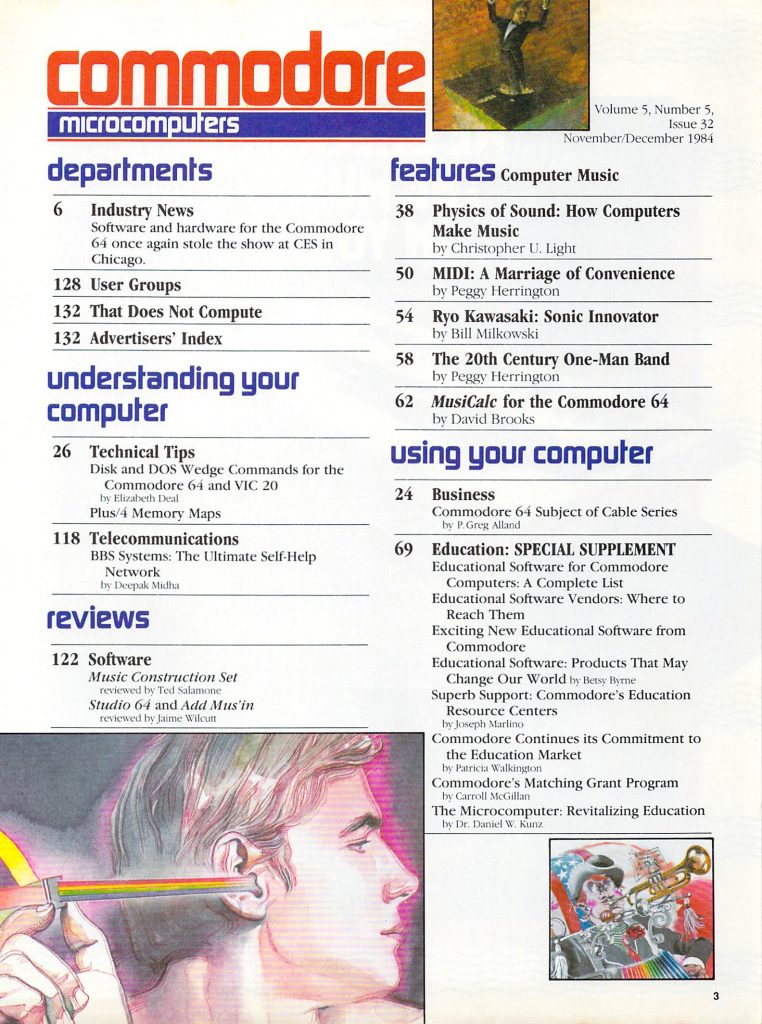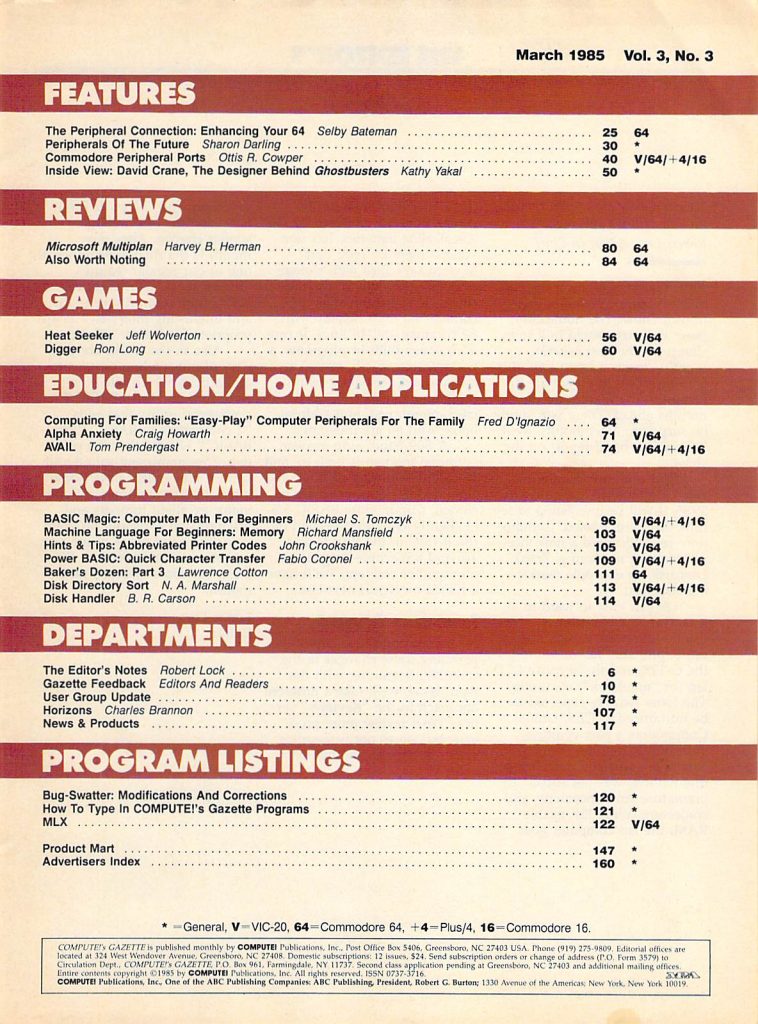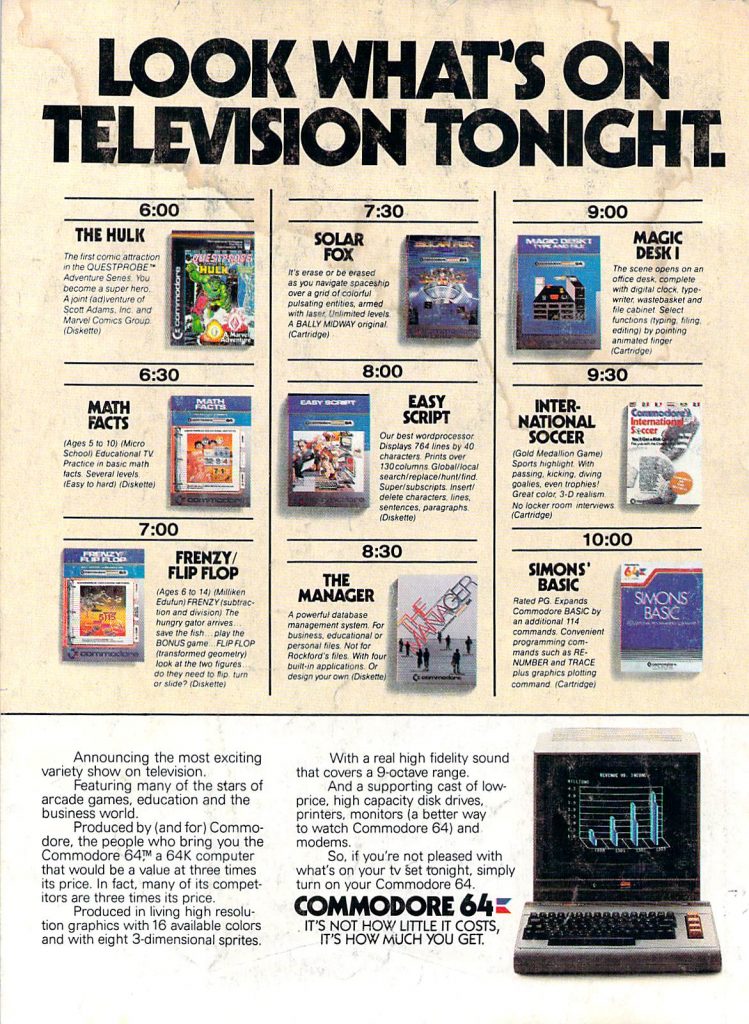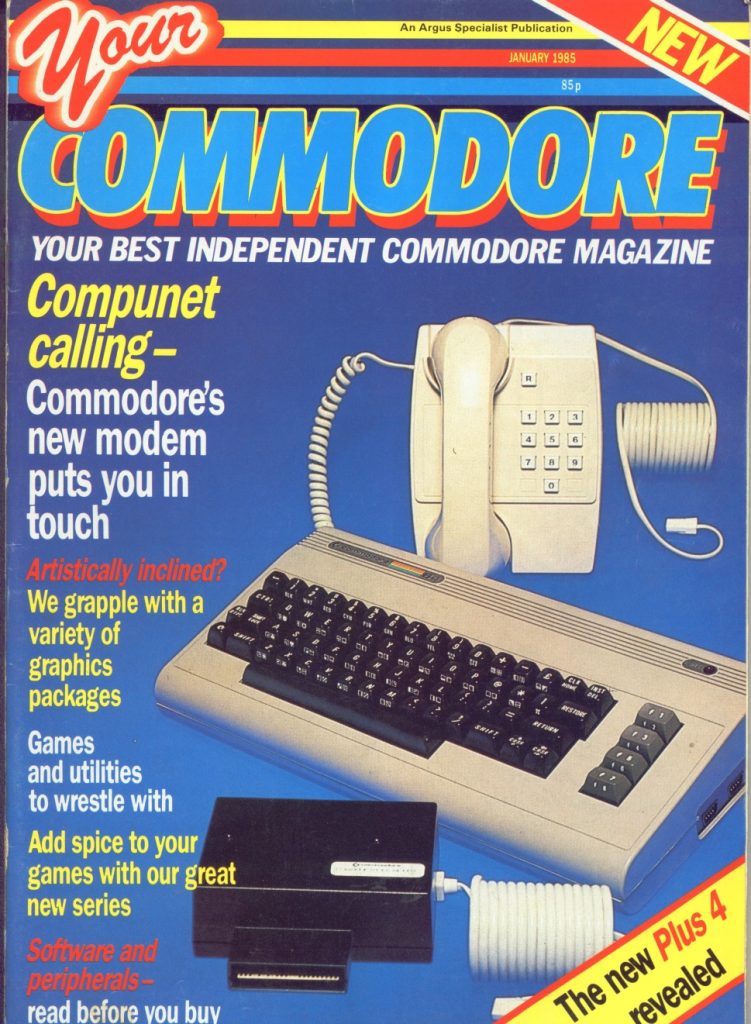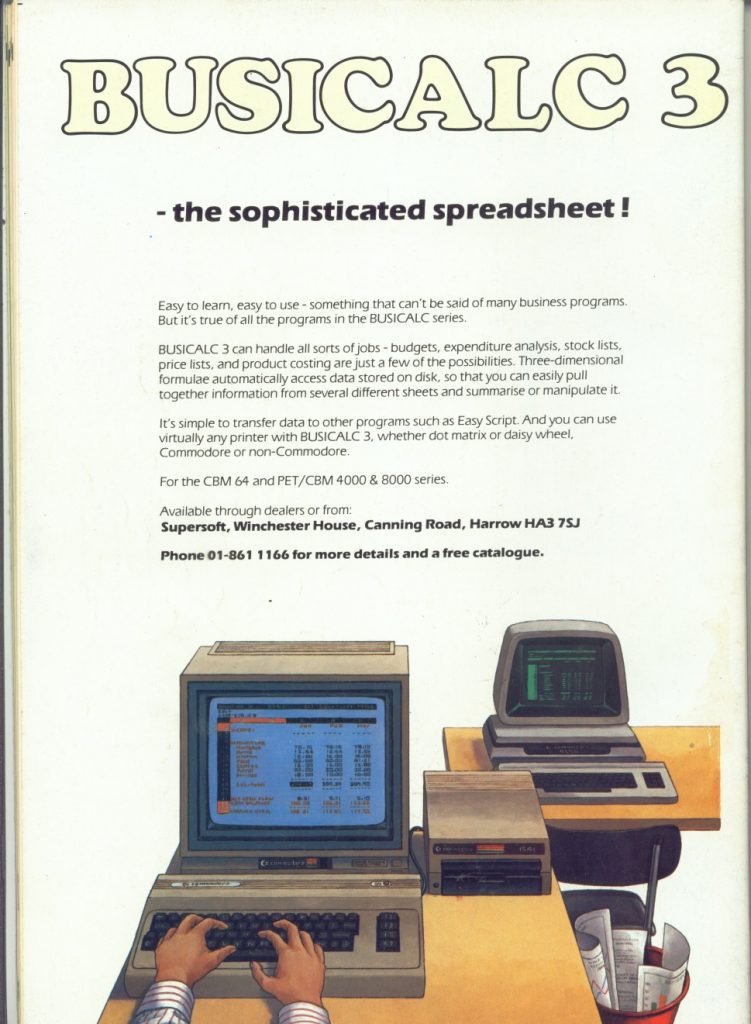Source: Commodore Microcomputers – Issue Number 32 – November/December 1984
Commodore had a number of official publications over the years. Well, really there were two, and then one, and they went through a couple of different name changes. In 1984, Commodore Microcomputers was covering at least the Commodore 64, VIC-20, and Plus/4 (which had a very short commercial life). The November/December 1984 issue includes:
Departments
- Industry News – A look at the 1984 Summer Consumer Electronics Show. This year was dominated by software and hardware for the Commodore 64.
Understanding Your Computer
- Technical Tips – A list of disk and DOS wedge commands for the Commodore 64 and VIC-20. Plus a memory map for the Plus/4 and C-16.
- Telecommunications – All about BBS systems including what they are, who runs them, what you can do on them, and much more.
Reviews
- Music Construction Set – An excellent music composition program from Electronic Arts for the Commodore 64.
- Studio 64 and Add Mus’in – This software package allows you to easily add sound and music to your own BASIC programs.
Features
- Physics of Sound: how Computers Make Music – A look into the technical details on how computers are able to generate music.
- MIDI: A Marriage of Convenience – MIDI, which stands for Musical Instrument Digital Interface, was still relatively new at the time. It is the standard by which instruments can communicate with computers.
- Ryo Kawasaki: Sonic Innovator – A musician who also developed software for the Commodore 64 including Kawasaki Synthesizer and Kawasaki Rhythm Rocker.
- The 20th Century One-Man Band – A look at some of the new music software and hardware for the Commodore 64 that lets you be your own one man band.
- MusiCalc for the Commodore 64 – This software package allows you to compose, transcribe, play, store and print music with your Commodore 64.
Using your Computer
- Business – How the Commodore 64 became the star of a cable TV show called The Program Critic Computer Show.
- Education: Special Supplement – A complete list of the educational software available for the Commodore 64 (no doubt out of date by the time it was printed), contact information for educational software vendors, and much more about the Commodore 64 in the education market.
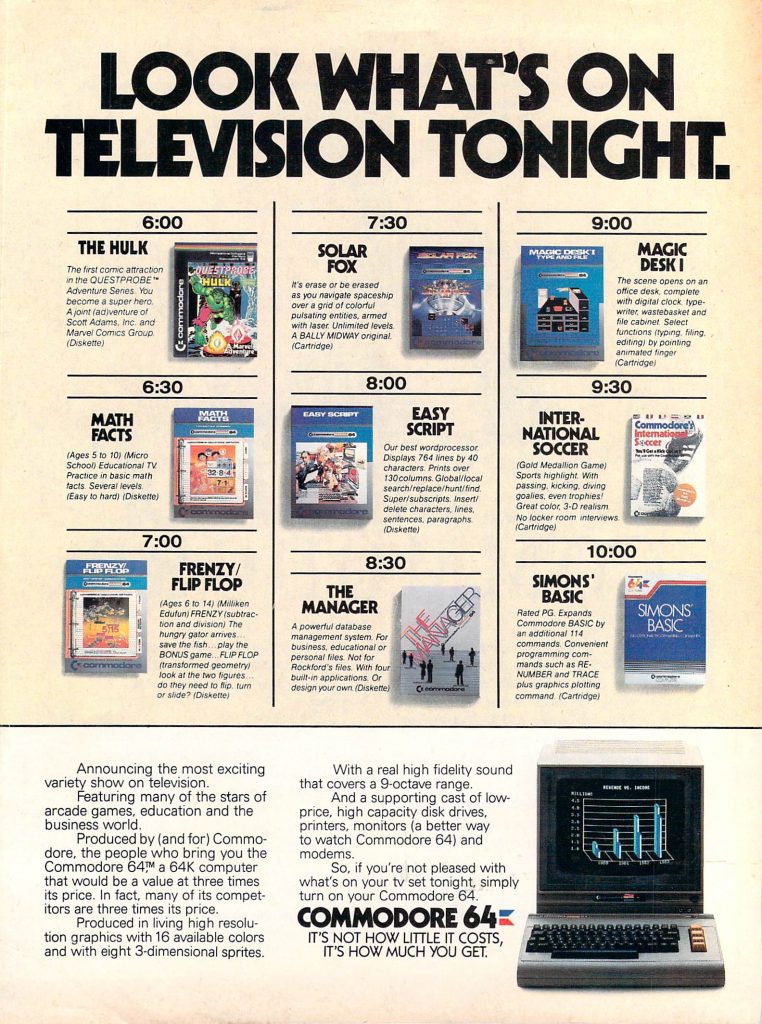
…and more!
